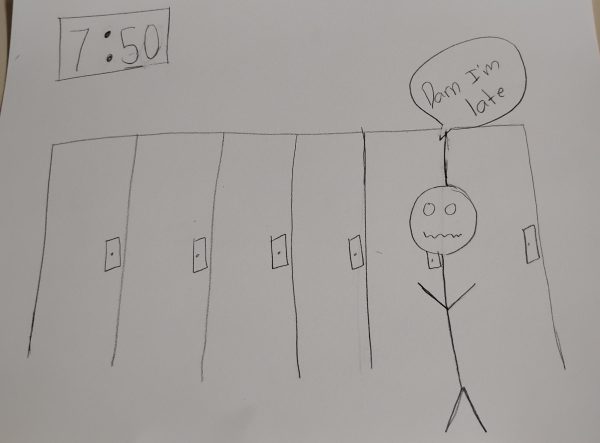Zombie Deer Disease on the rise

A deer portraying symptoms of CWD. The disease also affects elk, mule deer, white-tailed deer, black-tailed deer and moose.
Chronic Wasting Disease (CWD) has been on the rise since the late 1960s.
The disease, which has recently been named Zombie Deer Disease, has been found in many free-ranging elk, mule deer, white-tailed deer, black-tailed deer and moose on north-west hunting grounds in more than 24 states. The most important being Wyoming, Colorado, Nebraska and northwestern Kansas.
“I think it’s weird that the disease is just now popping up on the radar even though it’s been around for a while now,” Jacob Money (10) said. Money hunts on a regular basis.
While most infected animals don’t make it to the final stage of CWD, those who do take on a zombie-like state and exhibit strange behavior and physical deteriorating, with exposed ribs and an overall sickly appearance. The Center for Disease states that many symptoms of the disease exist, such as excessive salivation, loss of appetite, progressive weight loss, excessive thirst and urination, teeth grinding, holding the head in a lowered position and drooping ears. They do not bite like most people think a “zombie deer” would do.
While CWD has yet to be transmitted to humans, it has been transferred to non human primates, such as the Macaque.
The Macaque study, which started in 2009, has shown that CWD can be transferred from infected deer to the Macaque. The experiment involved a monkey eating infected venison over a three year period and contracted the disease, turning it into a state similar to that of an infected deer.
The Centers for Disease Control (CDC) has not been able to treat the disease because they have not had any infected human to try their experimented treatment on.
“I’m sure that there will be no dangerous outcomes of not treating the disease early,” health science teacher Craig Thompson said. “If there is a sudden outbreak in the near future, I am sure they will take care of it.”
Even though CWD infected deer have not been reported in the Wichita area, hunters are taking precautions to make sure they do not touch or eat infected deer.
“It’s scary to me. I don’t know what to do if I kill one,” Hayden Vittitow (10) said. “One day I might kill and eat a deer and end up getting the disease and I might die from it.”
The CDC has issued prevention methods to make sure there is no chance that the disease is harmful to people such as wearing gloves when handling deer carcasses and trying to minimize how much hunters handle the deer.

Jonathan Doss (10), a first year member of the 2018-19 Newspaper staff, enjoys writing stories about the here and the now at AHS. His enjoyment for reading...







